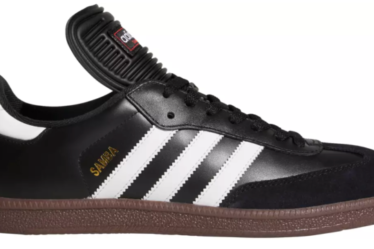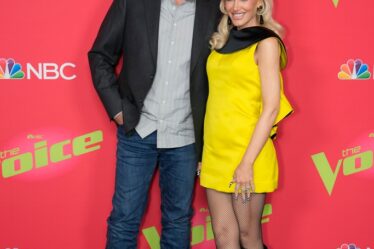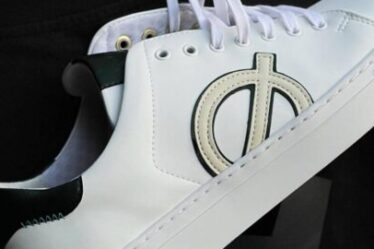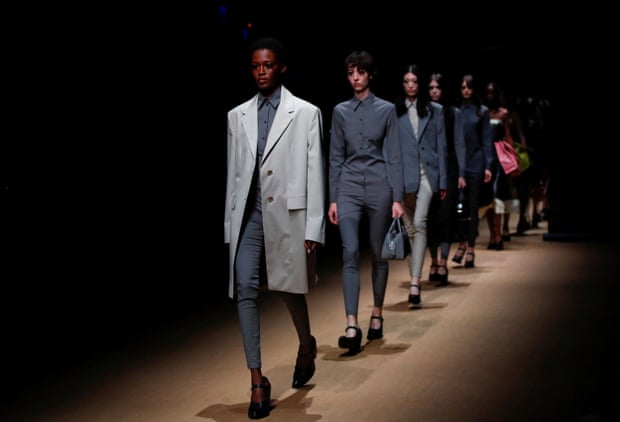
At first, the creases on the Prada blazer looked like an oversight. Perhaps the model had got bored waiting for her turn on the catwalk, sat on the floor and inadvertently crumpled her outfit. A big gaffe at Milan fashion week, where flawless perfection is the aesthetic baseline, but these things happen.
But then there was a pencil skirt that had a front split torn into the fabric. And more creases – which, on closer inspection, proved to be stitched and ironed into place. “Gestures of error”, as Miuccia Prada’s co-designer Raf Simons put it.
Twists, rifts and folds that suggested “pieces that have had a life” were echoed in the set design for the show, an immersive temporary art installation by the film director Nicolas Winding Refn in which holes punched into black cardboard walls framed grainy, abstract film snippets of domesticity: a flickering lightbulb, a sleepy walk up a staircase.
Deliberate mistakes, a triangulated creative collaboration between two fashion designers and a film director, and fragments of film glimpsed in the background of a catwalk make for a mind-bendingly convoluted setup for a 15-minute fashion show. And this, of course, is precisely the point. Prada is high-fashion for the kind of people who appreciate arthouse cinema and modern art installations. Intellectual complexity is as key to Prada as the famous triangle logo.
The clothes themselves were simple. The Prada catwalk is always peppered with ideas that get borrowed for nothing by an audience much broader than the few who can afford to shop in the boutiques. Here, that meant broad-shouldered blazers the grey of wet slate worn with narrow trousers, for daytime.
For evening, jewel-coloured silk shell tops were tucked neatly into elongated pencil skirts. Last season’s white racer-back vests – a hit high-street trend that began on the Prada catwalk – were swapped for the fierce plainness of white shirts buttoned to the throat.
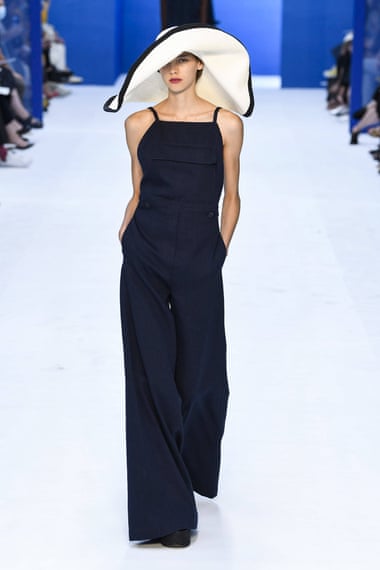
Max Mara is a more straightforward proposition, for women who want well-made flattering clothes updated with a light side-order of feminism. The wardrobe of the 1930s French Riviera – elegant wide-legged trousers with racer-back vests, straw baskets and vast sunhats – is a classic summer vibe to which Ian Griffiths, the British designer of this Italian brand, added food for thought by giving top billing to Renee Perle, whose kohl-rimmed eyes and finger-waved hair are familiar from portraits taken by her lover, photographer Jacques-Henri Lartigue. “Perle is remembered only as a muse, and Lartigue as the artist,” said Griffiths after the show. “But it is her style, her presence, that really makes those photos. The idea of a ‘muse’ is a way of dismissing the contribution of creative women.”
Griffiths learned about the silhouettes of the 1930s from the very best: his fashion tutor at Manchester Polytechnic was the legendary designer Ossie Clark, who made the slinky bias-cut gowns of that decade fashionable again in the late 1960s. “The style of the 1930s is very feminine, but also really modern,” Griffiths said.

